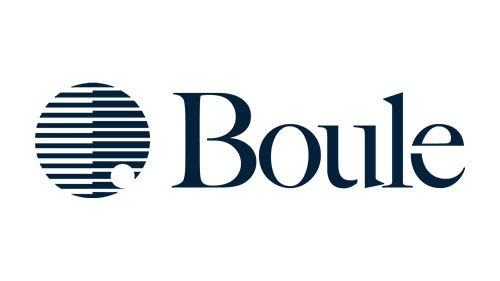A Novel Capsule-Based Smell Test for Diagnosis of Neurological and Respiratory Diseases
|
By LabMedica International staff writers Posted on 10 May 2021 |

Image: Photograph of the novel capsule-based smell test (Photo courtesy of Queen Mary University of London)
To aid in diagnosing diseases where loss of the sense of smell is a symptom, such as in chronic neurological conditions like Parkinson's and Alzheimer's diseases and in acute respiratory infections such as that caused by COVID-19, a team of researchers at Queen Mary University of London (United Kingdom) developed a novel smell testing kit based on capsules of aromatic oils placed between two strips of single-sided tape.
This smelling test was made up of aromatic oil capsules that were prepared by a fabrication technique, which enabled full control over the capsule size, the shell thickness, and the volume of the encapsulated oil. The technique generated capsules by concentrically dripping oil/alginate droplets from a coaxial nozzle into an oppositely charged ionic liquid. After formation, liquid capsules were left to dry and form a solid crust surrounding the oil.
The prototype test used in the current study consisted of placing a standardized number of capsules between adhesive strips that users crushed and pulled apart to release the smell. In addition, a simple mathematical model was developed to predict the volume of encapsulated oil within the capsule in terms of the flow rate ratio and the nozzle size.
In this preliminary study, a small group of eight patients with Parkinson's disease were instructed to crush the capsules between their fingers and then peel back the tape strip to release the aroma contained within the capsules.
The participants reported that the smells from the tests were detectable and remarked on the relative ease of rupturing the capsules, particularly for those with tremors, compared to the standard scratch and sniff smell test available on the market.
First author Dr. Ahmed Ismail, a lecturer of fluid dynamics at Queen Mary University of London, said, "Most of the smell tests on the market depend on using paperboard items treated with a fragrant coating called scratch and sniff, in which you need to scratch a card to release the odor. The problem with this approach is that the amount of odor released depends on the extent to which the individual scratches, something that might affect the outcome of the test. Our capsule-based smell test does not have this problem because the amount of odor released is controlled by the amount of oil precisely encapsulated. The mass-production of our new test would also be cheaper than a scratch and sniff test.
Dr. Ismail said, "Our capsule-based smell test can assist in the rapid diagnostic of various diseases linked to the loss of smell. These include chronic neurological conditions such as Parkinson's and Alzheimer's disease, as well as COVID-19, which is known to affect the sense of smell. Being non-invasive and less stressful, the capsule-based smell test has benefits over the nose swab in diagnosing COVID-19. This is an advantage for testing children in particular, as they are typically horrified if they need to do a nose swab, and the test can be done in the comfort of their own home."
The capsule-based smell test was described in the April 28, 2021, online edition of the journal Royal Society Interface.
Related Links:
Queen Mary University of London
This smelling test was made up of aromatic oil capsules that were prepared by a fabrication technique, which enabled full control over the capsule size, the shell thickness, and the volume of the encapsulated oil. The technique generated capsules by concentrically dripping oil/alginate droplets from a coaxial nozzle into an oppositely charged ionic liquid. After formation, liquid capsules were left to dry and form a solid crust surrounding the oil.
The prototype test used in the current study consisted of placing a standardized number of capsules between adhesive strips that users crushed and pulled apart to release the smell. In addition, a simple mathematical model was developed to predict the volume of encapsulated oil within the capsule in terms of the flow rate ratio and the nozzle size.
In this preliminary study, a small group of eight patients with Parkinson's disease were instructed to crush the capsules between their fingers and then peel back the tape strip to release the aroma contained within the capsules.
The participants reported that the smells from the tests were detectable and remarked on the relative ease of rupturing the capsules, particularly for those with tremors, compared to the standard scratch and sniff smell test available on the market.
First author Dr. Ahmed Ismail, a lecturer of fluid dynamics at Queen Mary University of London, said, "Most of the smell tests on the market depend on using paperboard items treated with a fragrant coating called scratch and sniff, in which you need to scratch a card to release the odor. The problem with this approach is that the amount of odor released depends on the extent to which the individual scratches, something that might affect the outcome of the test. Our capsule-based smell test does not have this problem because the amount of odor released is controlled by the amount of oil precisely encapsulated. The mass-production of our new test would also be cheaper than a scratch and sniff test.
Dr. Ismail said, "Our capsule-based smell test can assist in the rapid diagnostic of various diseases linked to the loss of smell. These include chronic neurological conditions such as Parkinson's and Alzheimer's disease, as well as COVID-19, which is known to affect the sense of smell. Being non-invasive and less stressful, the capsule-based smell test has benefits over the nose swab in diagnosing COVID-19. This is an advantage for testing children in particular, as they are typically horrified if they need to do a nose swab, and the test can be done in the comfort of their own home."
The capsule-based smell test was described in the April 28, 2021, online edition of the journal Royal Society Interface.
Related Links:
Queen Mary University of London
Latest Molecular Diagnostics News
- Genomic Test Could Reduce Lymph Node Biopsy Surgery in Melanoma Patients
- Urine Test Could Replace Painful Kidney Biopsies for Lupus Patients
- Blood Test Guides Post-Surgical Immunotherapy for Muscle-Invasive Bladder Cancer
- Mitochondrial DNA Mutations from Kidney Stressors Could Predict Future Organ Decline
- Blood Test Could Predict Bariatric Surgery Outcomes in Teenagers
- ctDNA Blood Test to Help Personalize Postsurgical Colon Cancer Treatment
- AI Powered Blood Test Predicts Suicide Risk in Bipolar Patients
- DNA Sensor Enables Molecular Detection from Single Blood Drop
- DNA-Powered Test Accurately Detects E. Coli Lookalike Bacteria
- World’s Fastest DNA Sequencing Technique to Revolutionize NICU Genomic Care
- Blood Test Uses Cell-Free DNA to Detect ALS Faster and More Accurately
- Multi-Cancer Early Detection Blood Test Increases Cancer Detection
- Portable Label-Free Device Tracks Alzheimer's Disease in Real Time
- Liquid Biopsy Test Enables Early Detection of ICI-Related Myocarditis
- Rapid POC Diagnostic Test Detects Asymptomatic Malaria Cases
- Improved DNA Sequencing Tool Uncovers Hidden Mutations Driving Cancer
Channels
Clinical Chemistry
view channel
VOCs Show Promise for Early Multi-Cancer Detection
Early cancer detection is critical to improving survival rates, but most current screening methods focus on individual cancer types and often involve invasive procedures. This makes it difficult to identify... Read more
Portable Raman Spectroscopy Offers Cost-Effective Kidney Disease Diagnosis at POC
Kidney disease is typically diagnosed through blood or urine tests, often when patients present with symptoms such as blood in urine, shortness of breath, or weight loss. While these tests are common,... Read moreHematology
view channel
Viscoelastic Testing Could Improve Treatment of Maternal Hemorrhage
Postpartum hemorrhage, severe bleeding after childbirth, remains one of the leading causes of maternal mortality worldwide, yet many of these deaths are preventable. Standard care can be hindered by delays... Read more
Pioneering Model Measures Radiation Exposure in Blood for Precise Cancer Treatments
Scientists have long focused on protecting organs near tumors during radiotherapy, but blood — a vital, circulating tissue — has largely been excluded from dose calculations. Each blood cell passing through... Read more
Platelets Could Improve Early and Minimally Invasive Detection of Cancer
Platelets are widely recognized for their role in blood clotting and scab formation, but they also play a crucial role in immune defense by detecting pathogens and recruiting immune cells.... Read more
Portable and Disposable Device Obtains Platelet-Rich Plasma Without Complex Equipment
Platelet-rich plasma (PRP) plays a crucial role in regenerative medicine due to its ability to accelerate healing and repair tissue. However, obtaining PRP traditionally requires expensive centrifugation... Read moreImmunology
view channel
Blood-Based Liquid Biopsy Model Analyzes Immunotherapy Effectiveness
Immunotherapy has revolutionized cancer care by harnessing the immune system to fight tumors, yet predicting who will benefit remains a major challenge. Many patients undergo costly and taxing treatment... Read more
Signature Genes Predict T-Cell Expansion in Cancer Immunotherapy
Modern cancer immunotherapies rely on the ability of CD8⁺ T cells to rapidly multiply within tumors, generating the immune force needed to eliminate cancer cells. However, the biological triggers behind... Read moreMicrobiology
view channel
Fast Noninvasive Bedside Test Uses Sugar Fingerprint to Detect Fungal Infections
Candida bloodstream infections are a growing global health threat, causing an estimated 6 million cases and 3.8 million deaths annually. Hospitals are particularly vulnerable, as weakened patients after... Read more
Rapid Sepsis Diagnostic Device to Enable Personalized Critical Care for ICU Patients
Sepsis is a life-threatening condition that occurs when the body’s response to infection spirals out of control, damaging organs and leading to critical illness. Patients often arrive at intensive care... Read morePathology
view channel
Tears Offer Noninvasive Alternative for Diagnosing Neurodegenerative Diseases
Diagnosing and monitoring eye and neurodegenerative diseases often requires invasive procedures to access ocular fluids. Ocular fluids like aqueous humor and vitreous humor contain valuable molecular information... Read more
AI-Powered Method Combines Blood Data to Accurately Measure Biological Age
Chronological age tells us how many years we’ve lived, but not how quickly our bodies are ageing. Some people stay healthy well into their 80s or 90s, while others experience decline much earlier.... Read moreTechnology
view channel
Embedded GPU Platform Enables Rapid Blood Profiling for POC Diagnostics
Blood tests remain a cornerstone of medical diagnostics, but traditional imaging and analysis methods can be slow, costly, and reliant on dyes or contrast agents. Now, scientists have developed a real-time,... Read more
Viral Biosensor Test Simultaneously Detects Hepatitis and HIV
Globally, over 300 million people live with Hepatitis B and C, and 40 million with HIV, according to WHO estimates. Diagnosing bloodborne viruses such as HIV and Hepatitis B and C remains challenging in... Read moreIndustry
view channel
Advanced Instruments Merged Under Nova Biomedical Name
Advanced Instruments (Norwood, MA, USA) and Nova Biomedical (Waltham, MA, USA) are now officially doing business under a single, unified brand. This transformation is expected to deliver greater value... Read more





















